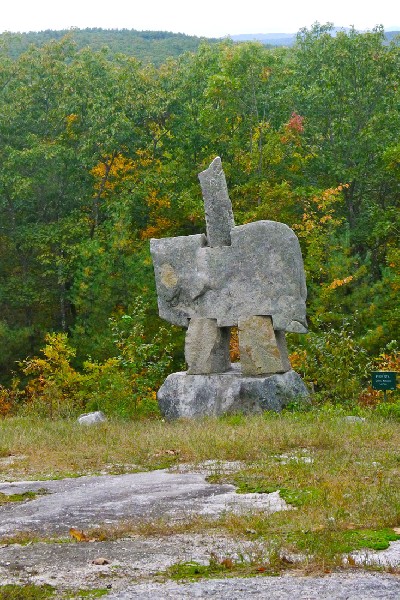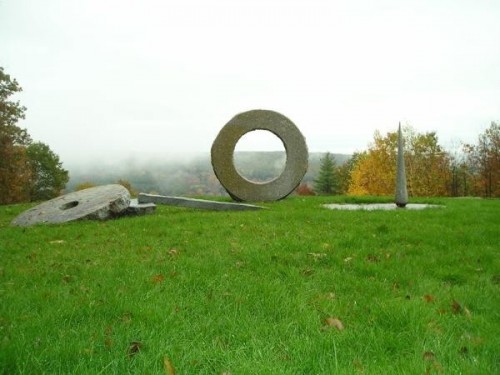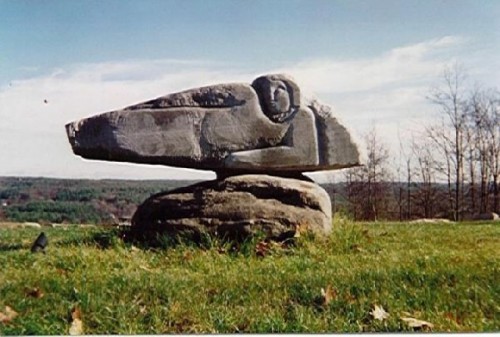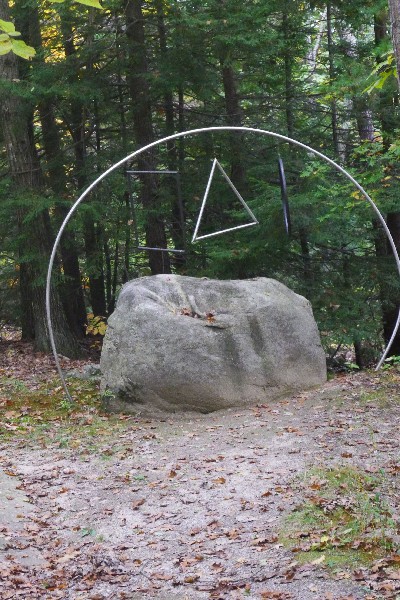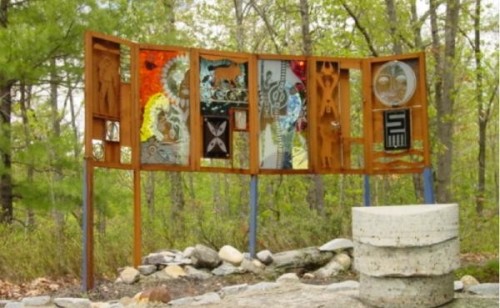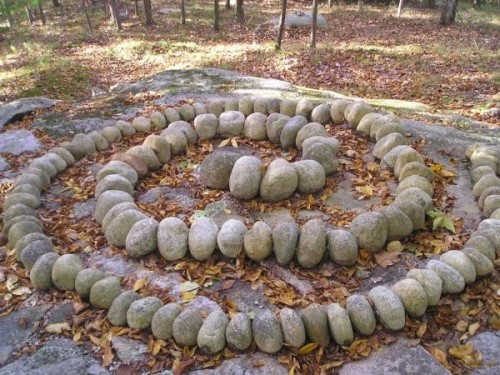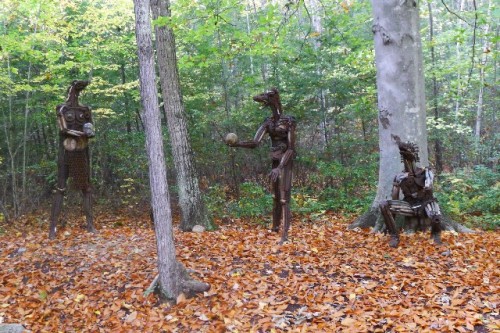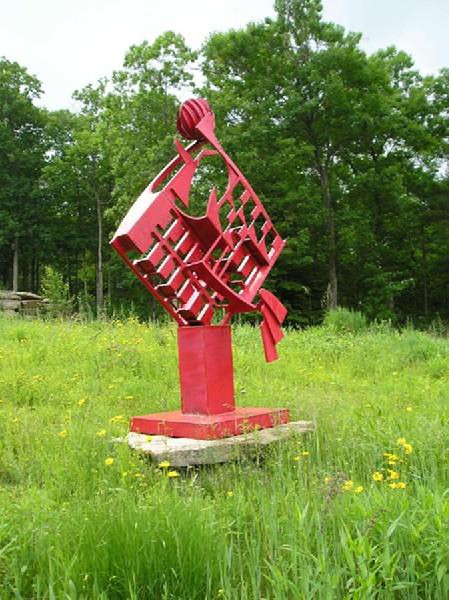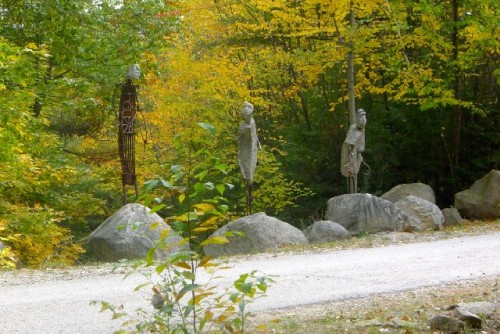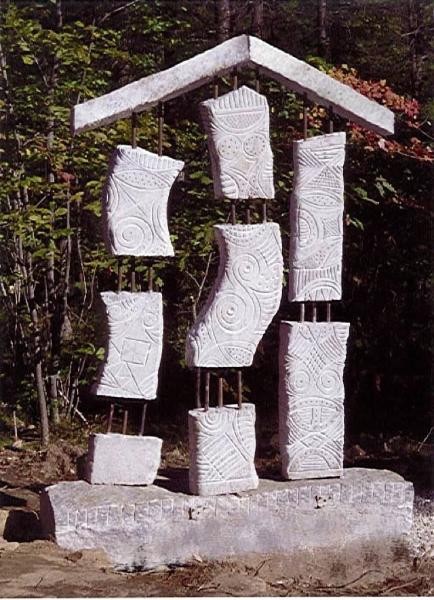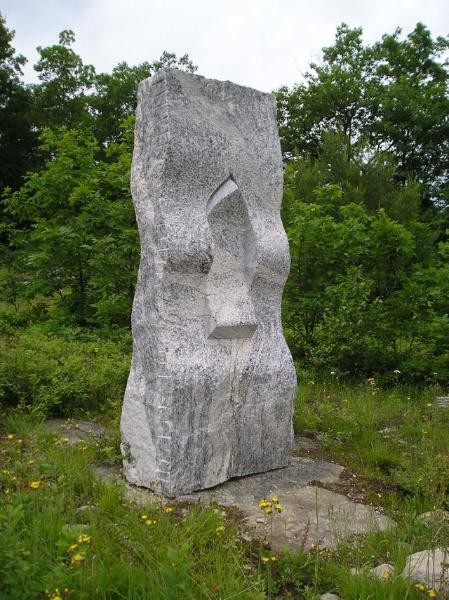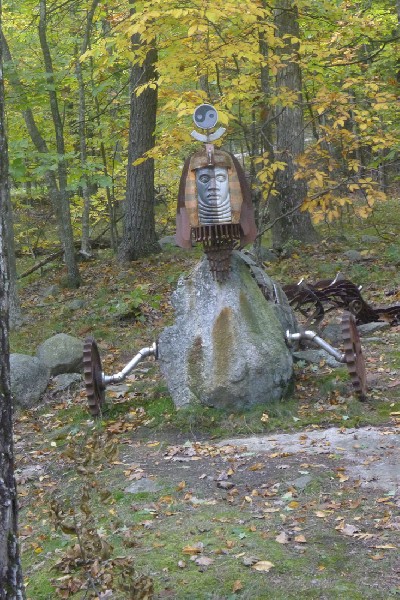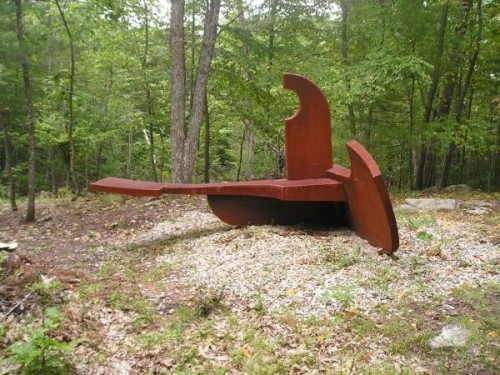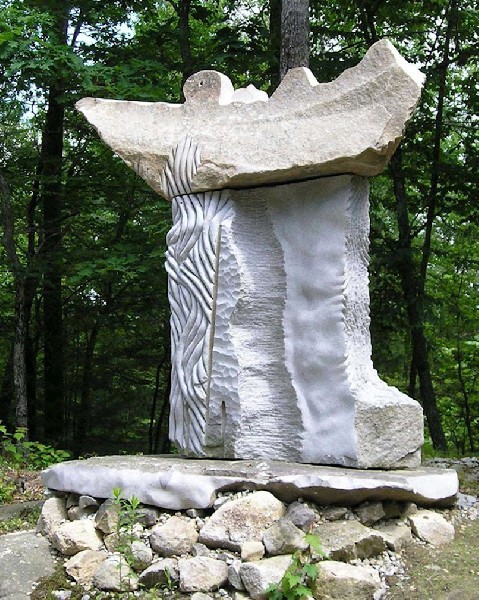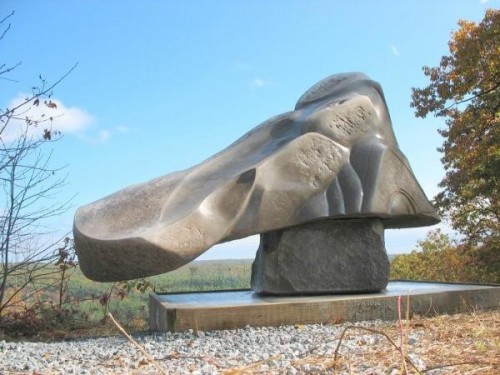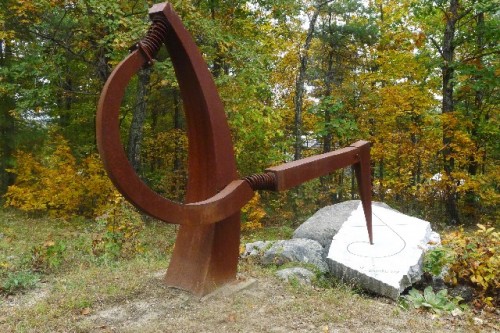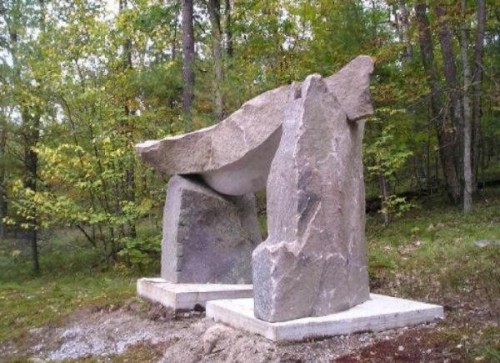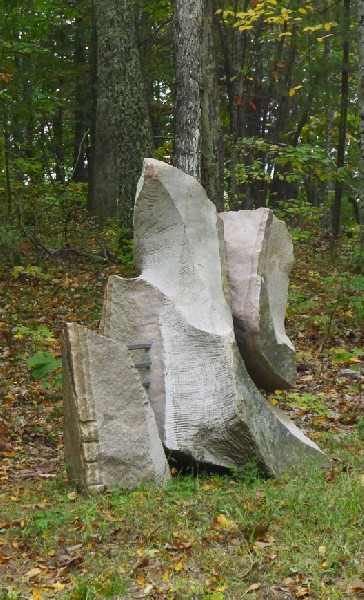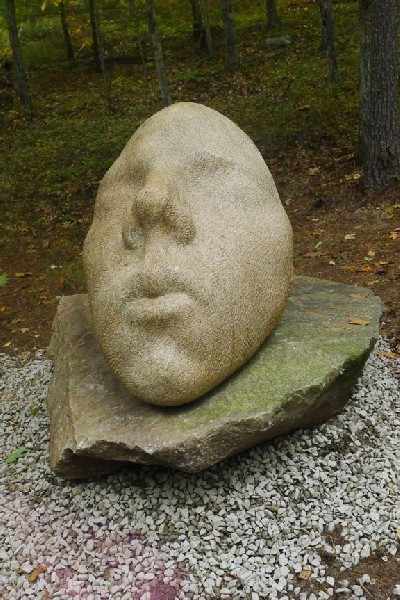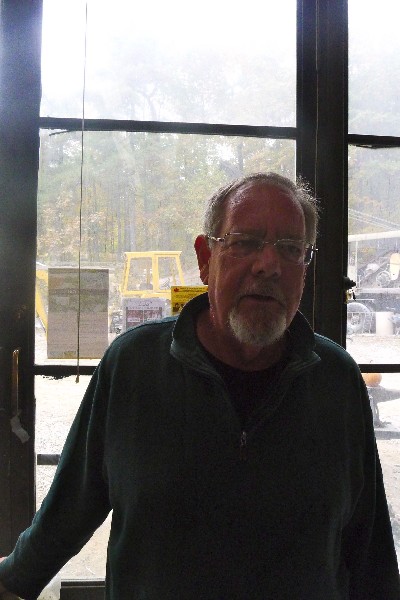Andres Institute of Art: A Mountain of Public Art
Artists from all over the World Have Created Sculpture
By: Mark Favermann - Oct 08, 2012
On a brisk October day, I visited the Andres Institute of Art, a surprising public art park, no actually a public art mountain located in Brookline, New Hampshire. It is set on 140 acres of Big Bear Mountain, previously used as a Southern New Hampshire ski slope. This is a public art destination of the first order.
This particular art in nature experience was extremely gratifying. Too often, large outdoor or public art collections are a hodge-podge of large scale works. Unfortunately, often institutions with limited resources are at the mercy of collectors and artists who want to find a place for their leftover large-scale pieces.
And the result is often qualitatively less than good as sometimes these are second or third tier works. I say this without denigrating the whole notion of collections of public art. They are so rare in any form that the effort is applauded by me if not the actual sculpture on display.
What is superlative about the Andres Institute of Art is that there is a consistency of professionalism and thoughtful placement of the works. There are no superstars in the collection.
This is not true of two lesser public art collections in the Boston area. One at a suburban "regional" museum and the other at an urban university campus. Both have star sculptors' works but the quirky nature of much of both of these collections are less about art than curatorial eccentricity and acceptance of lesser quality to reinforce the size of their collections.
Therefore, the Andres Institute of Art is a shining example of what can be achieved with a thematic sense of organization and high aesthetic standards. It was interesting how unsolicited a number of visitors who happened to be artists (artists and art classes are drawn to the Institute) expressed this notion of the institute's achievement compared to the other attempts previously referred to two collections.
Bought in 1996 by engineer Paul Andres, in 1998 the Institute was formally created as a non-profit tax exempt entity "to serve and advance the intellectual and social well being of the public by educating and training artists, by promoting the integration of art and technology, and by supporting fine arts."
To this end, the Institute is involved in several activities related to art, including the annual International Bridges and Connections sculpture symposium. The first symposium was held in 1999. Seven artists were invited to come to Brookline, NH for two weeks to create sculptures which would be placed on permanent display on the mountain.
Sculptors from Lithuania, Latvia, England, Czech Republic, Ukraine, New Hampshire and Vermont attended this first symposium and stayed with local volunteer families. While some of the visiting sculptors cut, bent and welded steel, others were splitting, shaping, grinding and polishing stone. Distinctively, the work ranges from the elegantly refined to the roughly primitive.
The work was carried out under the expert guidance of sculptor John Weidman, who has served as the Artistic Director of Andres Institute since its founding. He is the artistic literal glue that has kept the Institute thriving. A volunteer, he mentors the visiting artists and assists then to technically achieve their creations. John's steadfast vision and constancy has fostered the quality and special nature of the Institute.
John's own sculptures are part of the Institute's landscape. His gateway-like large open screen steel horizontal structure welcomes visitors as they start the steep trail to the top. This piece seems to be a whimsical narrative including fantasy figures and abstract forms.
A group of enthusiastic volunteers assist with grooming and preparing sculpture sites. As the sculptures were completed, volunteers moved them from the studio to the sites using heavy equipment. The result of the first symposiun was that seven new sculptures had been placed on the mountain.
This "symposium format" was a great success. Since that time, the Institute has held a sculpture symposium each year. And each symposium has had a unique theme.
Each artist is paid a small stipend for their attendance, but the real reward is that they are allowed to create whatever sculpture they want. And they are allowed to place it wherever they want on the mountain.
Though the constants of materials, most often New England, in this case New Hampshire Granite and metal reinforce a certant similarity of fabrication, techniques and sometimes even finishes, the actual sculptures vary greatly in style and conceptualization.
Each artist makes a personal statement in their own stylistic way. These pieces range from more or less roughly finished sculptures to refined stone carving, from steel rods as 3D drawings to structures sheathed in metal. There is often a feeling of creative spontaneity among the various pieces, a unique statement artistic languages that are understandable without much verbal translation. Somehow, there is a wonderful communicative universality to the majority of sculpted objects, monuments or vignettes.
A true catalogue of the various pieces would be a major project in itself. However, a number of notable sculptures should be pointed out. There is a solidity yet charming personality to Phoenix by Latvian sculptor Janis Karlovs at the summit of Big Bear Mountain. This 11 ton piece is the largest in the Institute's collection, and it relates strongly to Native American tradition.
Aura by Yin Peet, an artist from Taiwan, is more of a poetic gesture with a geometry of fine lines drawn in thin metal. Nova By Japanese-born Mamoru Sato is a stone spiral that speaks to a formal Japanese garden and a pathway through a labyrinth.
Provocative are the three figures of Debate By Tomas Kus who is from the Czech Republic. This welded steel figurative conversation causes pause when encountered. There is an Eastern European serious political poster quality to the work even or perhaps because it is set in the woods.
A very different figurative piece, Enjoying the Stars by Alexander Molev, a sculptor from Russia, is created fronm wood sheathed in copper. There is real character in the magical astronmer. Mbari House by Geoffery Nwogu who is from Nigeria is a patterned decorated series of hanging granite pieces from a roof shaped structure fabricarted in granite and metal.
Of particular note is that Nwogu did not have time to finish the decoration on the last granite piece on the bottom left. This led the Institute to subsequently lengthen the artists' tenure to three weeks instead of two. Aesthetically, however, less may have been more in regard to Mbari House as a sculpture.
The Boat by Bulgarian artist Milen Vassilev has a bold granite monumentality. Drawing Sculpture - The Myth by Satoru Takata, an artist from Japan living now in Hawaii, elegantly and grandly gesturally draws with steel on granite. This contrasts with Viet Namese-Japanese artist Yasushi Hori's Emerging Life, a roughly hewn granite gateway or portal that has a primitive presence.
Souls of Peace by Kenyan artist Gerard Motondi is a highly polished granite piece that evokes a madonna and child. Cuerpo Díafano (transparent body) by Chilean Gricelda López Paredes is an abstracted reclining figure that solidly nontransparent but none the less provocative.
Mongolian-born artist Amgalan Tsvegmid's refined Horse Spirit 2012 sculpture is well-crafted but certainly very expected. Cycle of Days by Vietnamese artist Hoa Bich Dao is also well-crafted but is decoratively illustrative rather than sculpturally structural.
Sleep By Isidore Batu Siharulidze, originally from The Republic of Georgia and now teaching at Boston University and living in Brookline, MA is a refined sculptured head that evokes restful dreams and smiling responses.
While the artists are expected to pay (often through national or state grants) for their travel to Brookline, NH, the Institute provides tools and materials to help each artist so they can realize his or her artistic vision. Host families still keep the artists. The symposia have been extended to three weeks as two weeks seemed too limiting for many artists.
The annual symposia have been truly international with participating artists coming from many countries and diverse cultures from across five continents. there are now 72 original works all over the mountain's miles of wooded trails and vistas. This year 2012, there were four artists at the Institute ranging from Viet Nam to Bulgaria to Mongolia to The Republic of Georgia.
The purpose of Andres Institute of Art is to bring art to the New Hampshire community by making the experience of art an everyday affair and to underscore the intersection of nature and culture. The mission is to bring the visitor into a closer, and more accessible relationship with works of art in a natural setting. Both the location and the environment bring art and nature together.
The grounds at Andres Institute of Art are open to the public year round and free of charge. The Institute encourages encourage visitors to enjoy the art and nature trails simultaneously.
Trail maps are located at the trailhead behind parking lot of the adjacent Big Bear Lodge. Visitors can download trail information at the Institute's continually updated website prior visiting. The website can be found at http://andresinstitute.org.
Each sculpture trail is rated for hikers from easy to most difficult. The major trail up to the artists' studio building is quite steep, but quite worth the treck to the top as well as quite worth the aches and pains later felt on my and other middle aged bodies.
Public Art can be strong or weak, brave or somehow apologetic. It allows for the total environment to rain upon it both environmentally and societally. The Andres Institute of Art is both strong and brave, and wonderfully it allows public art to be set naturally.

